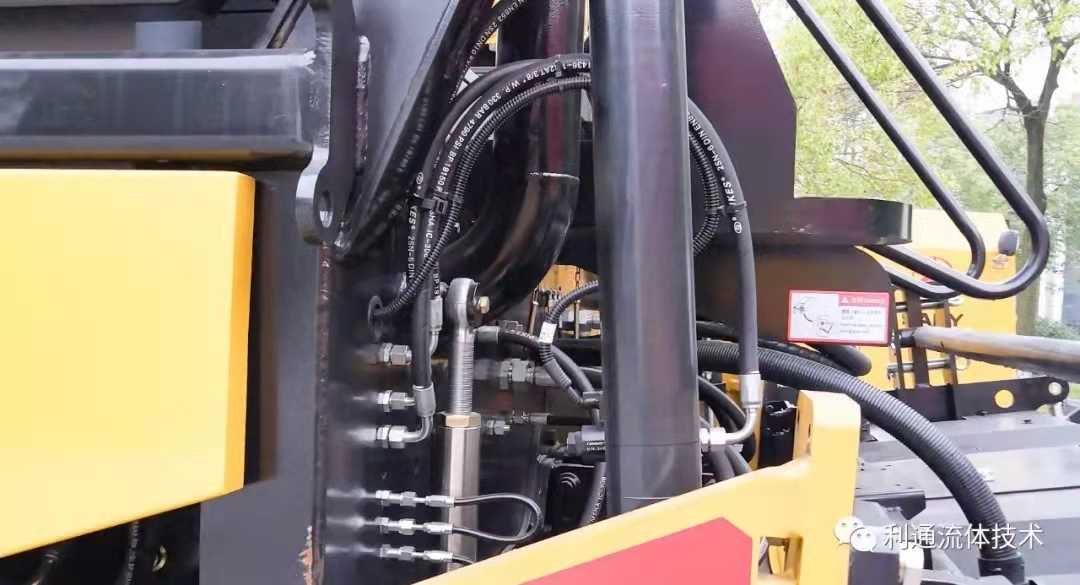Deciphering the difference between braided hose and flexible hose
2024-08-28 15:21:57
In modern industrial fields and daily life, hoses are indispensable and important components. There are many types of hoses and a wide range of applications. Among them, braided hoses and flexible hoses are particularly popular. However, for many people, these two terms may be a little unfamiliar and sometimes even confused. This article will explore in depth what braided hoses and flexible hoses are, and analyze in detail the differences between the two and their respective application scenarios.
What is a braided hose?
Braided hoses usually refer to hoses with one or more layers of braids wrapped around the outer layer of the hose. These braids can be metal wires, stainless steel wires, nylon fibers or other high-strength materials. This design not only enhances the hose's pressure resistance and mechanical strength, but also greatly improves its wear resistance and service life.
Materials and functions of braided layers
1. Metal braided layer: Common materials include stainless steel wire, galvanized steel wire, etc. Hoses with metal braided layers are suitable for high-pressure environments, can withstand great external pressure and impact, and also have excellent high temperature resistance.
2. Nylon braided layer: Nylon fibers have excellent wear resistance and tensile strength. Nylon braided hoses are relatively more flexible and suitable for medium and low pressure environments. They are widely used in home and vehicle maintenance and other fields.
3. Glass fiber braided layer: Glass fiber is an inorganic non-metallic material with good insulation and corrosion resistance. Glass fiber braided hoses are suitable for use in high temperature and chemical environments.
Application of braided hoses
Due to their high pressure resistance and high wear resistance, braided hoses are widely used in industry, chemical industry, petroleum, aerospace and other fields. For example, high-pressure steam pipes, hydraulic system pipes, automobile engine coolant pipes, etc. are all typical applications of braided hoses.
What is a flexible hose?
As the name suggests, the main feature of a flexible hose is its high bendability and flexibility. In many occasions where frequent movement is required or installation space is limited, flexible hoses can play an irreplaceable role.
Application of flexible hoses
Flexible hoses are widely used in various mechanical equipment, household appliances, water conservancy projects and municipal construction due to their easy bending and convenient installation. For example, refrigerant delivery pipes in air-conditioning systems, water inlet and outlet pipes in sanitary equipment, gas and liquid delivery pipes in industrial equipment, etc.
The main difference between braided hose and flexible hose
Although braided hose and flexible hose seem to be interchangeable in some application environments, there are many obvious differences between the two in structure, performance and typical application occasions.
1. Different structure: Braided hose wraps one or more layers of braided fabric on the outer layer of traditional hose, making its structure more complex and having higher mechanical strength. In contrast, the structure of flexible hose is relatively simple, mainly based on the flexibility of the material itself, and usually has no additional braided layer.
2. Performance difference: Braided hose mainly emphasizes high pressure and wear resistance, while flexible hose pays more attention to bending and flexibility. Therefore, braided hose is suitable for high-pressure environment, while flexible hose is more suitable for applications that require flexible bending.
3. Material selection: The braided layer materials of braided hose are varied, usually using high-strength metal or fiber materials, while the materials of flexible hose are mainly rubber, PVC, etc. that focus on flexibility.
4. Application field: Braided hoses are mostly used in demanding application environments such as industry and high-pressure liquid transportation, while flexible hoses are more often used in urban construction, household and vehicle maintenance.
How to choose the right hose?
Choosing the right hose requires comprehensive consideration based on the specific use environment and requirements. The following aspects can be used as a reference:
1. Pressure requirements: If the application environment needs to withstand high pressure, then braided hoses are preferred. If the pressure requirement is not high, but a larger bending radius is required, flexible hoses are preferred.
2. Temperature conditions: Consider the ambient temperature of the hose during use. Braided hoses with metal braids and flexible hoses made of fluororubber are suitable for high temperature environments, while PVC flexible hoses are suitable for normal temperature environments.
3. Chemical corrosiveness: Choose the right material according to the chemical properties of the conveying medium. For example, if corrosive liquids need to be conveyed, fluororubber flexible hoses are a better choice, while ordinary rubber hoses may not be suitable.
4. Mechanical properties: Consider the wear and fatigue resistance of the hose, and choose the right product based on the frequency and intensity of use.
In short, braided hoses and flexible hoses have significant advantages and irreplaceable positions in their respective application fields. Understanding and correctly selecting the right hose can not only improve work efficiency, but also extend the service life of equipment and ensure safe production.
Braided hoses and flexible hoses have their own advantages. It is particularly important to choose the right type of hose according to specific needs and application environment.